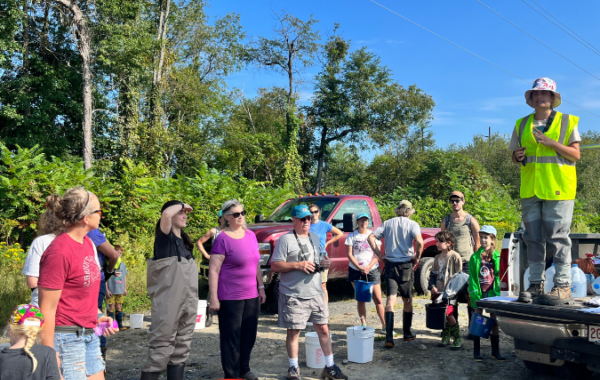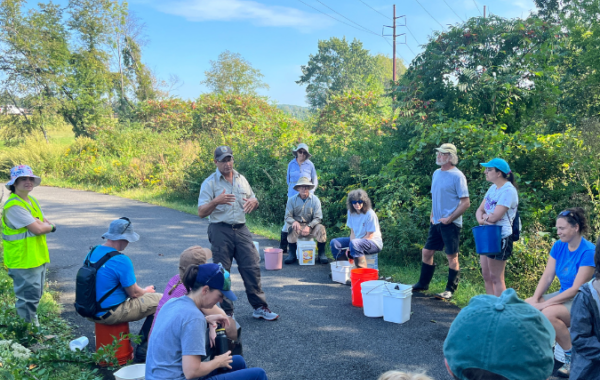Sea Lamprey Rescue for Community Science & Conservation
- Diana Chaplin
- Sep 12, 2023
- 2 min read

Connecticut River Conservancy, along with colleagues at U.S. Fish and Wildlife Service, recently held our annual sea lamprey rescue in Turners Falls.
Every year the Turners Falls Cabot Station drains their canal for maintenance purposes. Unfortunately, this process leaves thousands of juvenile lampreys stranded and exposed to harsh elements. We only have a few hours to find and rescue as many as we can before they perish. Because of this tight timeline and the size of the canal, we invite volunteers to help in this effort.
We are incredibly grateful to the 50+ volunteers who came to join this community science and migratory fish initiative, and while everyone went home caked in mud it was a very successful event with an estimated over 1,000 live sea lamprey rescued, along with a range of other species such as mudpuppies, carp, perch, and mussels.
Here are some of our favorite photos:
Sea lamprey are an important native migratory fish of the Connecticut River. Unlike the species we find in the North American Great Lakes, our local sea lamprey are not invasive. You will find adults migrating upriver form the ocean every year to spawn (reproduce). Once they’ve reached the ideal habitat for their lamprey babies, their lifecycle comes to an end, leaving a carcass full of rich nutrients our ecosystem thrives on. The lamprey babies, called ammocoetes grow in our freshwater systems and take 4 to 5 years to migrate to the ocean and grow into adults. Some of them inevitably end up in this canal, and that’s where we can lend a hand to help them continue on their life cycle journey.
During the rescue, USFWS staff evaluated all collected sea lamprey to ensure that only living lampreys were gathered and placed them in specialized tanks with clean water as the event went on. The majority of lamprey were later released downriver, with some taken to the Silvio O. Conte Anadromous Fish Research Laboratory managed by the U.S. Geological Survey in order to continue studying the species and include living lampreys in evaluation of fish ladder design effectiveness.
Connecticut River Conservancy’s ongoing work to support cleaner rivers and healthy habitat for migratory fish includes nest surveys, dam removal, riparian buffer plantings, trash removal, and much more. You can learn more about migratory fish or support this work with a contribution today.




























